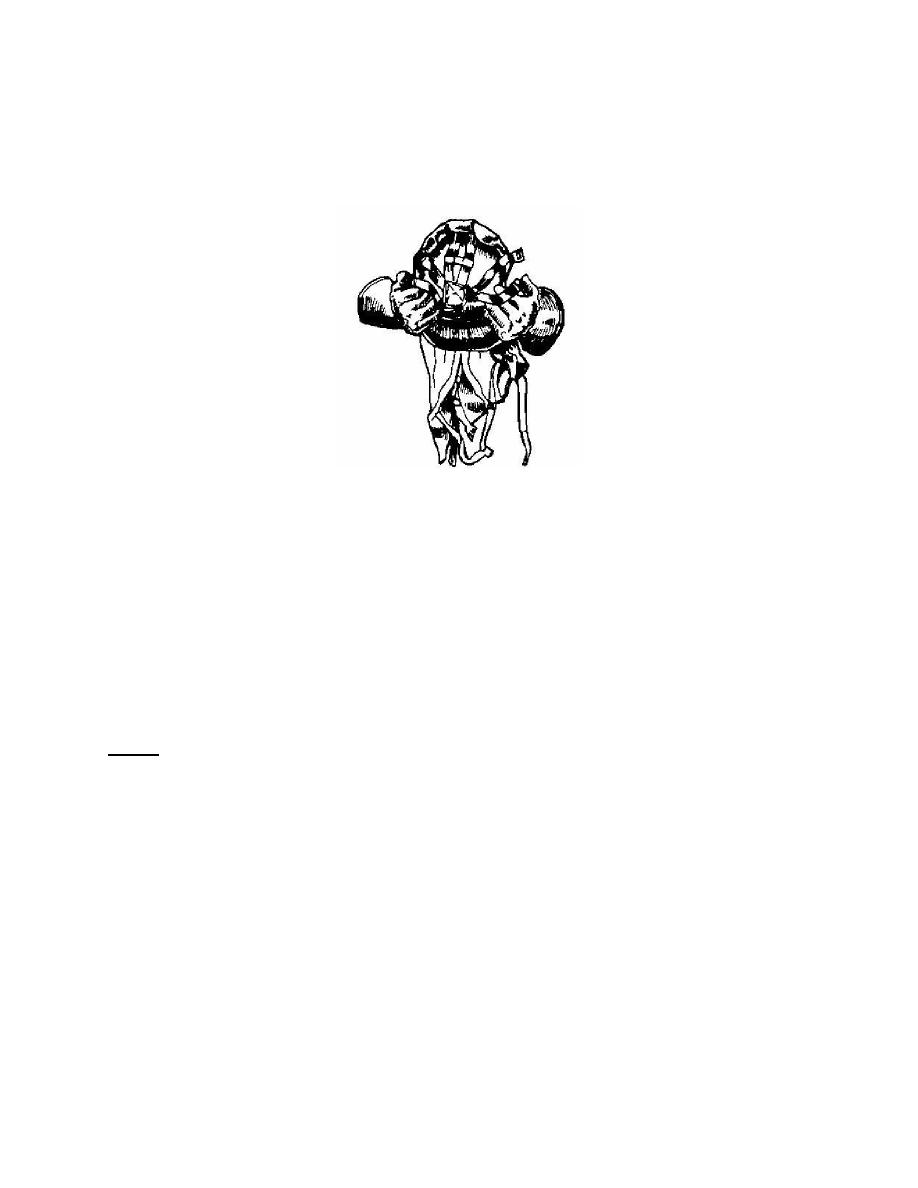
(4)
Spread the mask open (figure 8-9) and position it on the casualty's chin.
(5) Position your thumbs through the two bottom straps of the head
harness. Then cup the casualty's head with the fingers of both hands and lift slightly.
Figure 8-9. Masking a casualty.
(6) Move your thumbs back and down behind the casualty's head, making
sure the two bottom straps of the head harness are placed below the ears of the
casualty. Make sure the center pad is centered in the middle of the back of the head.
(7)
If the casualty is able to follow directions, instruct him to clear the mask.
(8) Check for a complete seal of mask by covering the inlet valves on the
casualty's mask and having the casualty inhale. The mask will collapse if properly fitted,
indicating a good seal.
NOTE:
There is no way for a soldier to ensure that a non-breathing casualty's mask
has a good seal.
(9) Pull the protective hood over the head, neck, and shoulders of the
casualty. If time permits, close the zipper and tighten the drawstring.
c. Position the Casualty on His Side. Position the casualty on his the right
side, similar to a swimmer position, with head slanted down so that the casualty will not
roll back over. If vomiting occurs, the matter will be caught in the mask. This position
also gives you access to both injection sites (thigh and buttock).
d. Administer Nerve Agent Antidote Kit Injections. A casualty with severe
nerve agent poisoning should receive all three of the NAAKs that he carries.
(1)
Position yourself near the casualty's thigh.
IS0877
8-17



 Previous Page
Previous Page
